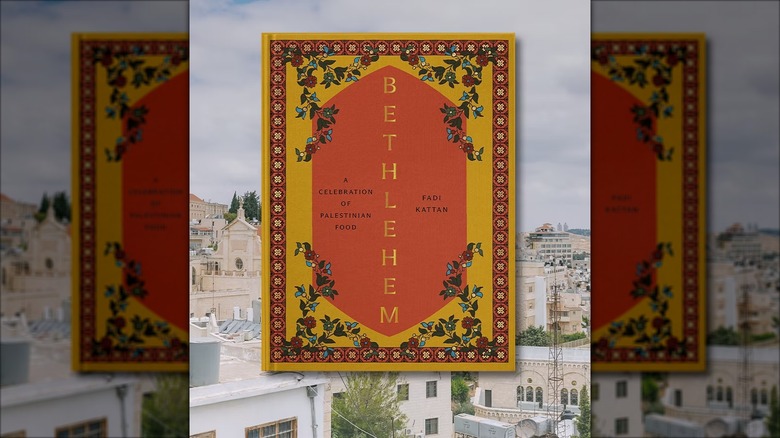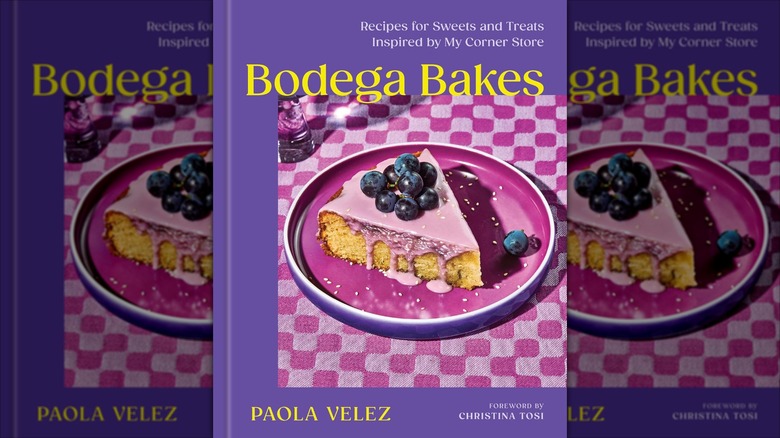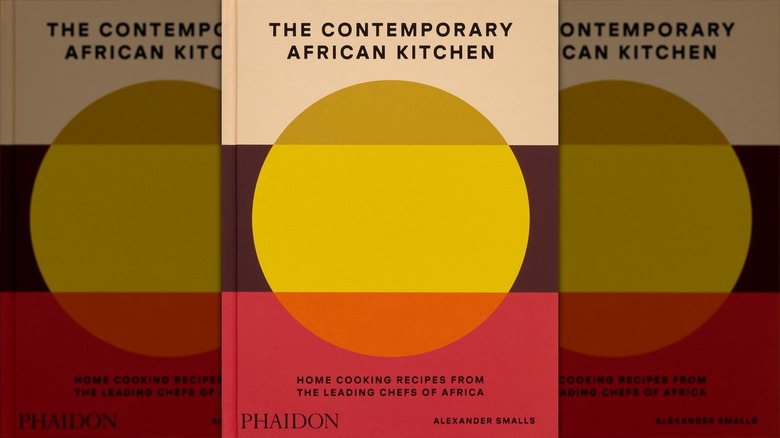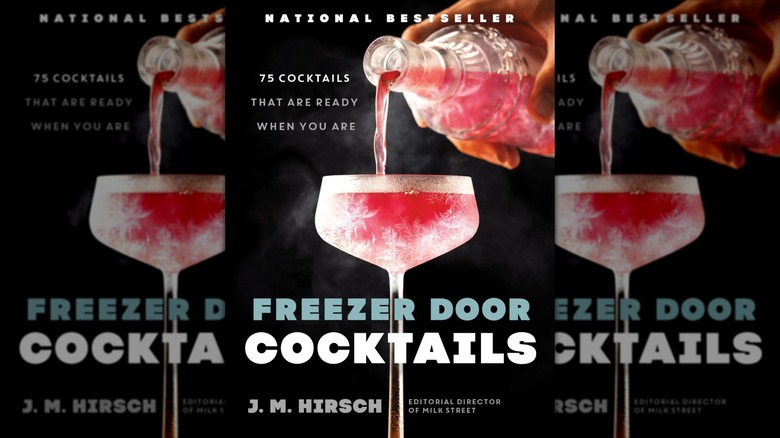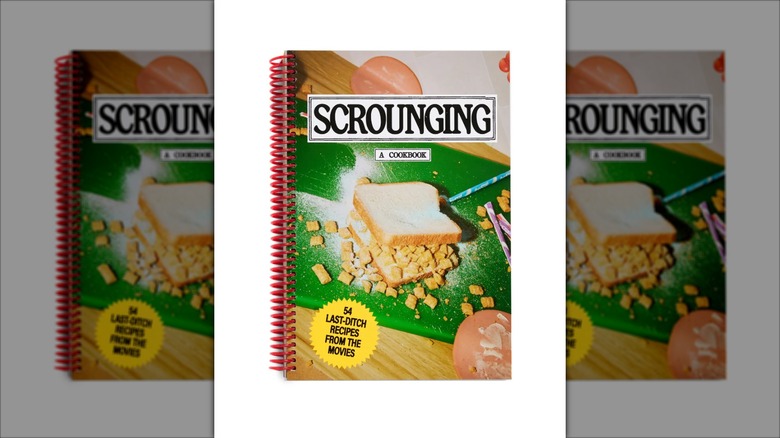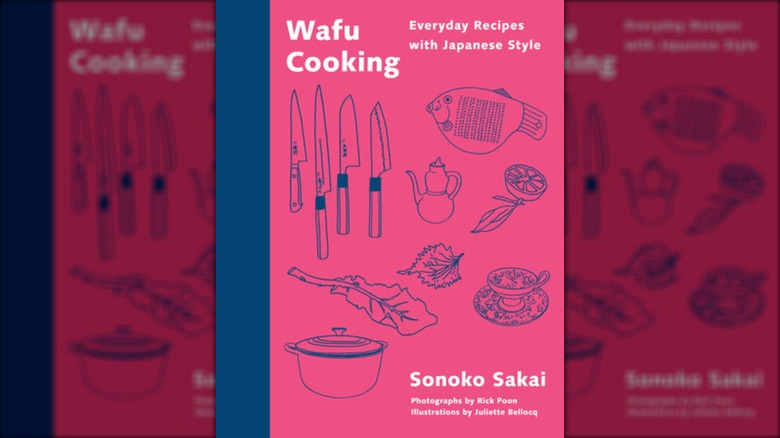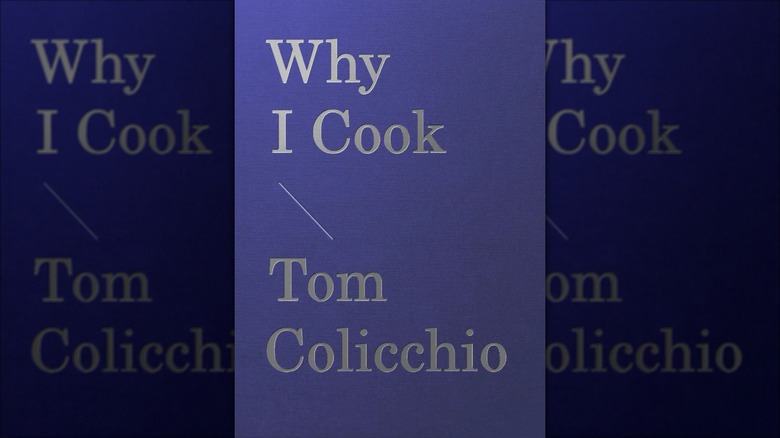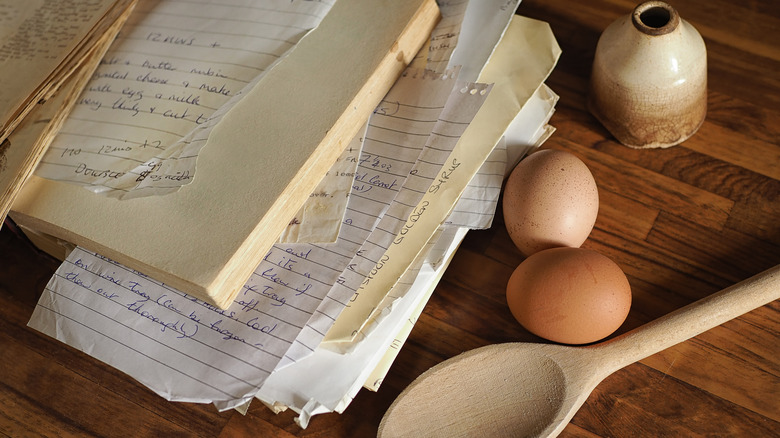The 25 Absolute Best Cookbooks Of 2024
We may receive a commission on purchases made from links.
History will remember 2024 for many events — like brat summer, Trump 2.0, "Wicked," and more — but the 365 days also included the release of some incredible cookbooks. Cookbook authors pooled their talents with visionary photographers to offer more diverse, colorful, and creative cookbooks than ever.
Looking back at this year, I've noticed countless best-of lists looking back at restaurants, films, books, and plays, but compendiums of the greatest cookbooks of the year prove more rarified. However, as a cookbook collector and recipe developer, I keep my middle and forefinger on the pulse of cookbook releases year-round to craft this list of some of my favorites.
I selected these books based on their voice, uniqueness, and image and illustration quality. These books also offer approachable recipes, because let's be real, we all own a handful of restaurant cookbooks with instructions far beyond our weeknight capabilities. So, scroll on to discover the most dog eared, flour-dusted, and oil-stained cookbooks I relied on over the year.
Amrikan
If a Mad Libs sheet met Bon Appétit, the recipes in "Amrikan" would be the result. Khushbu Shah pulls off impossible hybridizations of dishes such as Amchur ranch salad, chili paneer dumplings, and hash brown, egg, and cheese kati rolls, as well as classical Indian recipes like yogurt rice, butter chicken, and saag paneer.
A quick skim of the photos, shot on vibrant backdrops by Aubrie Pick, will incite cravings and surely encourage readers to expand their spice cabinets beyond the routine of thyme, oregano, and chili flakes. This book is a boisterous display of Shah's Indian-American background, coupled with her expertise earned as a food journalist. "Amrikan" stretches the reader's brain into a (curry sprinkled) pretzel.
Anything's Pastable
Gloriously unserious, Dan Pashman continues to ride along the wave of his invention of a brand-new pasta shape all the way to a book deal with "Anything's Pastable." The affable and oftentimes goofy host of "The Sporkful" podcast takes his readers on an adventure attempting to stretch their concept of pasta dishes from an Italian-adjacent affair to a global expedition of deliciousness.
The pasta obsessive invents fridge-raid dishes like mac 'n dal and Italian cafeteria hot dog pasta salad with canned veggies, as well as elevated inventions such as tortellini in kimchi Parmesan brodo and shakshuka and shells — all in the name of exploring pasta shapes and sizes to the extreme.
Bayou
The photos in "Bayou," expertly photographed by Denny Culbert, span from naturalistic kitchen shots to atmospheric stills of parades, landscapes, and one chillingly vivid photo of an alligator camouflaged in water.
Unlike the wave of trendy, cheery, and graphic cookbooks, this book's intention exists outside the tides of fashionability. This sincere and moodily-lit book teases out the culinary offerings of a Cajun table, all while Culbert's photography keeps beat and weaves together a region's foods, people, and place into one must-have tome. Readers discover the dimensionality beyond jambalaya, dirty rice, and fried okra. "Bayou" makes a hunger-inducing argument for tracking down soft shell crabs, hosting a crab boil, and even trying turtle meat.
Bethlehem
Despite the city of Bethlehem's recognition worldwide and the prominence of Levantine-inspired recipes over the past 20 years, cookbooks dedicated to historic land are relatively scarce. "Bethlehem" celebrates the Palestinian culture and region, thus making tangible a country we too often see depicted with less dimension than with the personal care author Fadi Kattan dedicates to describing it.
Kattan's earnest love letter to the land that nurtured his family for generations draws upon his childhood memories, family lore, and time spent abroad all to honor the city's rich history. He captures over 60 recipes ranging from the relatively simple (eggs in samneh with sumac) to the elaborate (qidreh).
Bodega Bakes
Bronx-born pastry chef Paola Velez makes her cookbook debut with a splashy, indulgent anthology dedicated to reimagining the everyday treats she found in the corner stores of her youth. Shot against boldly painted walls and vibrantly hued tables, "Bodega Bakes," features hot pink frostings, sunshine-colored cakes, and marzipan-adorned cupcakes shining back at readers as they soak in Velez's detailed, eloquent directives.
Although some of the recipes are a step beyond a novice baker's skillset, Velez's flawlessly decorated cakes and striking marbled-top brownies prove intimidating, though worth the effort. At the same time, her cookie chapter provides attainable goals for those of us who are clumsy with a piping bag.
Chae
Jung Eun Chae, a food world innovator, disrupted the fine dining scene when she transformed her small Brunswisk apartment into an intimate, but bustling, supper club. The intricate recipes and attention to detail in her book, "Chae," slow down the pace, which is ideal for folks who enjoy the process of cooking.
Fermentations, homemade sauces, and preserved and dried fruits and vegetables all honor the author's signature take on Korean cooking. The book is separated into seasons, which allows Chae to lead readers through a year of cooking Korean food from home, all while reminding them how to take a breath and enjoy every part of their meals.
Chinese Enough
2024 featured a handful of cookbooks that were intermingled with autobiographies. Kristina Cho's "Chinese Enough" combines her time in San Francisco's Inner Richmond district with her upbringing in the Midwest, all in pursuit of culinary synergy — evidenced in recipes for miso pork meatballs, a spaghetti made with ketchup, and hot honey mayo shrimp. Clearly, all the recipes inside "Chinese Enough" remain close to the author's heart. The book leaves readers wishing for an invite to one of Cho's family dinner nights, but her inventive recipes are a worthwhile consolation prize.
The Contemporary African Kitchen
"The Contemporary African Kitchen," an assemblage of recipes from Africa's home cooks interpreted by James Beard Award-winning chef and restauranteur, Alexander Smalls, is arranged into five distinct chapters based on region. The cookbook, which doubles as a handbook of African spices, jostles readers out of their comfort zone and into a new repertoire of hearty stews, zingy salads, and fruity desserts.
This is a book that's not just fit for your kitchen shelf, but also one that impresses on a coffee table collection. I'd gladly build a mini-stack around its sunset color palette.
Elysian Kitchens
"Elysian Kitchen" is unlike any cookbook I've read before. It draws inspiration from religious and spiritual centers around the world, recognizing the diverse foods and recipes associated with these sacred spaces. Author Jody Eddy, who was allowed to visit several mosques, monasteries, temples, and synagogues for this piece, cultivates an ingenious, stoic collection of recipes. She opts for posterity, rather than colorful pops of color and trendy recipes.
Through her research, Eddy reimagines holy recipes into beauteous, crave-able, hearty meals and snacks fit for eating after work, serving at a potluck, and celebrating something special. Kristin Teig's reverential photography brings this work to life, all while paying respect to divine spaces and the people who occupy them.
Flavor-ama
Useful food reference books are easily the most dog eared, well-worn, and dependable items in my kitchen. I keep "The Wine Bible," the original "The Flavor Thesaurus," and now "Flavor-ama" within reach for when I'm in need of inspiration.
Author Arielle Johnson's book is a scientific investigation into taste and how our tongues react to flavors. It emboldens its readers to discover the brain chemistry behind spice, offers a color wheel of wine terminology, and provides illustrated charts tracking the nuances of flavor. Reading Johnson's book not only arms readers with dozens of fun facts, but it also inspires them to think deeply and analyze everything they eat.
The Four Horsemen
"The Four Horsemen" cookbook is something of the Loewe "I Told Ya" shirt featured in "Challengers." It's nearly a Bat-Signal of cool. The wine-stained tome beacons for Baggu-clad guests to pull it from my shelves and thumb through it, mouths agape.
Named for the Brooklyn wine bar the authors operate, the anthology features writing from LCD Soundsystem's James Murphy (one of the co-owners), photography fit for an art show, and wine notes, all infused with clarity and humor. A rarity in many regards, "The Four Horsemen," completely encapsulates the restaurant it's honoring. It's not just a cookbook; it's an invaluably "hip" object.
Freezer Door Cocktails
If you're the sort of host who wants to treat your guests with the gravitas of a fine-dining restaurant, you'll know how the struggle of turning out thoughtful cocktails, while juggling a multi-course meal, can become the iceberg that sinks your ship. Luckily, J.M. Hirsch's "Freezer Door Cocktails" compiles a realistic, manageable cocktail list for parties, potlucks, or even your own nightcap.
Hirsch asks readers to batch entire bottles of cocktails prior to pouring. This removes any guesswork or computing and allows readers to batch multiple cocktails at once. Martinis, Manhattans, Mai Tais, and every other dream-worthy drink lurks in "Freezer Door Cocktails."
The Gourmand's Lemon
Taschen continues its The Gourmand series with an ode to the most famous citrus: the lemon. Front-loaded with glossy, high-resolution reproductions of lemon-themed artwork, interspersed with stories about the yellow wonder, "The Gourmand's Lemon" concludes with eye-catching recipes only Taschen could bring to life with such vibrancy.
As the collection of The Gourmand swells, its inclusion on a kitchen shelf will act as a little art installation, conversation piece, sentimental remembrance, and handy, encyclopedia-like tool. Start collecting them now before the series becomes a costly investment.
Hokkaido
Now nine-time cookbook author Tim Anderson returned to Japan after publishing last year's "Microwave Meals" — his only work outside the realm of Japanese cooking. "Hokkaido" dives into the oceanic cuisine of the Hokkaido region with entries widely dependent on seafood, though its a far cry from sushi. Recipes like rice-stuffed squid, salmon hot pot, and surf clam rice bento all unlock a dimension to the region's food culture lesser known to the wider world.
Like Anderson's previous installments, "Hokkaido," features pop-art-inspired graphics intermingled with unstuffy beauty shots of Anderson's creations — most of which are shockingly approachable to even the most novice of home cooks.
Jang
While the last decade welcomed a mini library of exquisite Korean cookbooks, an anthology devoted solely to the country's rich sauce (or jang) was, until 2024, missing from bookshelves. Luckily, Mingoo Kang's original angle on Korean kitchens in "Jang" weaves a narrative around Korea's mother sauces, all while Dong Gil Yun's photos of food and the landscape it hails from lends dimension to a cookbook necessary for any Korean food enthusiast.
Though it's not strictly concerned with classical Korean cooking, "Jang's" recipes shine brightest when applying Kang's explanations of each sauce to an unexpected dish, like her ssamjang cacio e pepe and Dover sole with doenjang caper sauce.
Jiggle!
I wasn't aware of how badly my bookshelves needed an entirely gelatin-themed cookbook until I opened the psychedelic pages of "Jiggle!" The co-authors think so far outside of the box of packaged Jell-O mix, infusing their fixation with gelatin and their love of theatrics.
Four chapters of jiggly, fun-loving recipes guide readers through uncomplicated renditions of wobbly, edible inventions to high-concept, near-artworks made with gelatin. Though the small hardback assumes its reader possesses at least one gelatin mold, the number of recipes in it will certainly cause you to stock up on new ones.
The Martini
Alice Lascelles' "The Martini" is hands-down my most dog eared volume of this year's cookbooks. This ode to the perfect martini starts as an anthology of the history and modernization of a cocktail that is both beautifully simple and incredibly complex. Then, Lascelles details every aspect of a well-made martini — including its temperature.
Lascelles finishes her masterpiece with a Rolodex of martini variations ranging from classic to avant-garde. She finds new shades to the martini that any gin (or vodka) drinker will covet. I only wish I had more hours in the evening to stir up Lascelles' liquid chicness.
Pocha
"Pocha," a name tied to Korea's food vendor culture, aims to encapsulate the lively, playful, and unserious vibrations of the country's celebrated food stalls and late-night dining. Every recipe made me long for a Hite and a bottle of Jinro soju.
Author Su Scott lends readers her take on corn cheese and ganjang yangnyeom chicken (or wings), along with a variety of small plates (banchan) to round out the dinner table. Toby Scott's photography articulates the immensely decadent experience of pocha dining and lifts the cookbook to new heights. Think snapshots of golden, crispy cheese, thick gochujang-laden sauces, and kimchi splatters — all of which bring readers closer to a niche dining culture their city might not house.
Scorched
No year in cookbooks would be complete without a grilling-heavy piece. "Scorched" fulfills the 2024 slot for flame-cooked meals, this time, focusing on seafood. It's the third of Genevieve Taylor's barbecue-focused volumes, following "Charred," and "Seared."
This book is rustic without wandering into cottage-core territory. It makes a perfect companion for the camping fisherman who seeks to heighten their culinary skills over a campfire. It's straightforward while simultaneously imaginative, and provides several books' worth of recipe options outside of the expected seafood-centric fare. Fish kofta, monkfish teriyaki skewers, and hake burgers are all laid-back luxuries detailed in "Scorched."
Sofra
If you weren't already looking forward to the bounty of spring and summer produce, flipping through "Sofra" will cause you to wish the winter away. Prismatic visuals, loaded tables, and beautifully-aged hands dot the expanse of "Sofra," thanks to photographer Luisa Brimble. The book's co-authors, Karima Hazim and Silvine Tabbouch, tour readers through the vast, colorful, and varied dishes of Lebanon.
The book is designed to showcase Lebanese cuisine and its reliance on community and family ties. "Sofra's" recipes sing the loudest when prepared amongst a group of loved ones bonding over the warmth of shared meals and collective feasts.
Scrounging
This is a cookbook from the movie studio that brought us "Midsommar," "Moonlight," and more recently "Love Lies Bleeding." A24's stamp of approval implies innovation, a level of provocativeness, and dark humor — which is just what you can expect with this book.
It's set around meals readers can throw together late at night with whatever haunts the inside of their kitchen cabinets. "Scrounging" collects after-hours menu suggestions all paying homage to beloved films. Messy, wild recipes like Kevin McCallister's 12-scoop ice cream sundae and Harry Moseby's post-coital fondue all await hungry cinephiles. A24's maiden journey into cookbooks proves to be as successful as its best films.
Sunlight & Breadcrumbs
Seattle's Renee Erickson, now a three-time cookbook author, extends her mastery in cookery yet again in "Sunlight & Breadcrumbs." A quick glance at Erickson's latest publication gives no hint of the chef's rainy, city roots.
It's photographed in luxurious daylight and punctuated by museum-worthy oil paintings. Erickson turns in a volume free of pretense and full of heart. Personal stories and biographical touchstones weave the pages together into a seamless collection of culinary inspirations. Lived-in, and not overly fussy, Erickson created the recipes inside "Sunlight" for her loved ones instead of her public.
Tarts Anon
The number of cookbook options available can boggle the brain, so a volume dedicated to one specific corner of the cooking world is a better way to pique and retain reader interest. Author Gareth Whitton and his wife, Catherine Way, use "Tarts Anon" to focus on the subtle, stylish, crusted treats known as tarts.
Tarts, which are not as illustrious as pie, nor as approachable as cookies, hover just outside the bubble of desserts home cooks whip up regularly. Whitton whittles away at the intimidating aspects of sweet and savory tarts in a sleek, artful collection of recipes suited for those who crave a little love from their Instagram culinary humble brags.
Wafu Cooking
"Wafu," translated into English, simply means "Japanese-style." "Wafu Cooking" delves into traditional Japanese cooking and ingredients by highlighting uncrowded, refined recipes like mentaiko spaghetti and marine striped bass crudo with plums. Author Sonoko Sakai sorts her recipes into categories, like soups, seafood, and meat. She starts each chapter with an essay and simple spice, sauce, or some other kitchen staple recipe, then applies it throughout the chapter.
"Wafu Cooking" encourages readers to take the time to mix their own curry powder, whisk up a homemade goma dare (sesame sauce), or ferment their miso in their kitchen — thus showing the importance of remembering the basics of Japanese cuisine.
Why I Cook
Tom Coliccho, best known for co-founding New York's iconic Gramercy Tavern, now represents a class of chefs who helped usher the contemporary food world into the vibrant spotlight where it now thrives. Classical, mostly Western-influenced, and comfy Colicchio, now a cookbook veteran, restrains himself from submitting an overly chef-y compilation of recipes and instead focuses on home cooking with this book.
Meatballs, stews, and simply executed steaks impress Colicchio, without trotting out tweezers, sous vide machines, or even a deep fryer. A true snow-day must-have, "Why I Cook's" pages brim with ideations of an ideal night indoors.
Methodology
I cherry-picked my absolute favorite cookbook volumes this year, which included cocktail books as well as kitchen-themed reference books. I looked for books that were unique and innovative, as I wanted to include selections that were truly different than other cookbooks I had purchased and read before.
I avoided including books dedicated to specific dietary restrictions, like vegan, vegetarian, and keto books, so that the focus could instead be on diverse, none-diet-based themes. I also widened my focus to anthologies from various background, but avoided focusing on any particular region too much.




